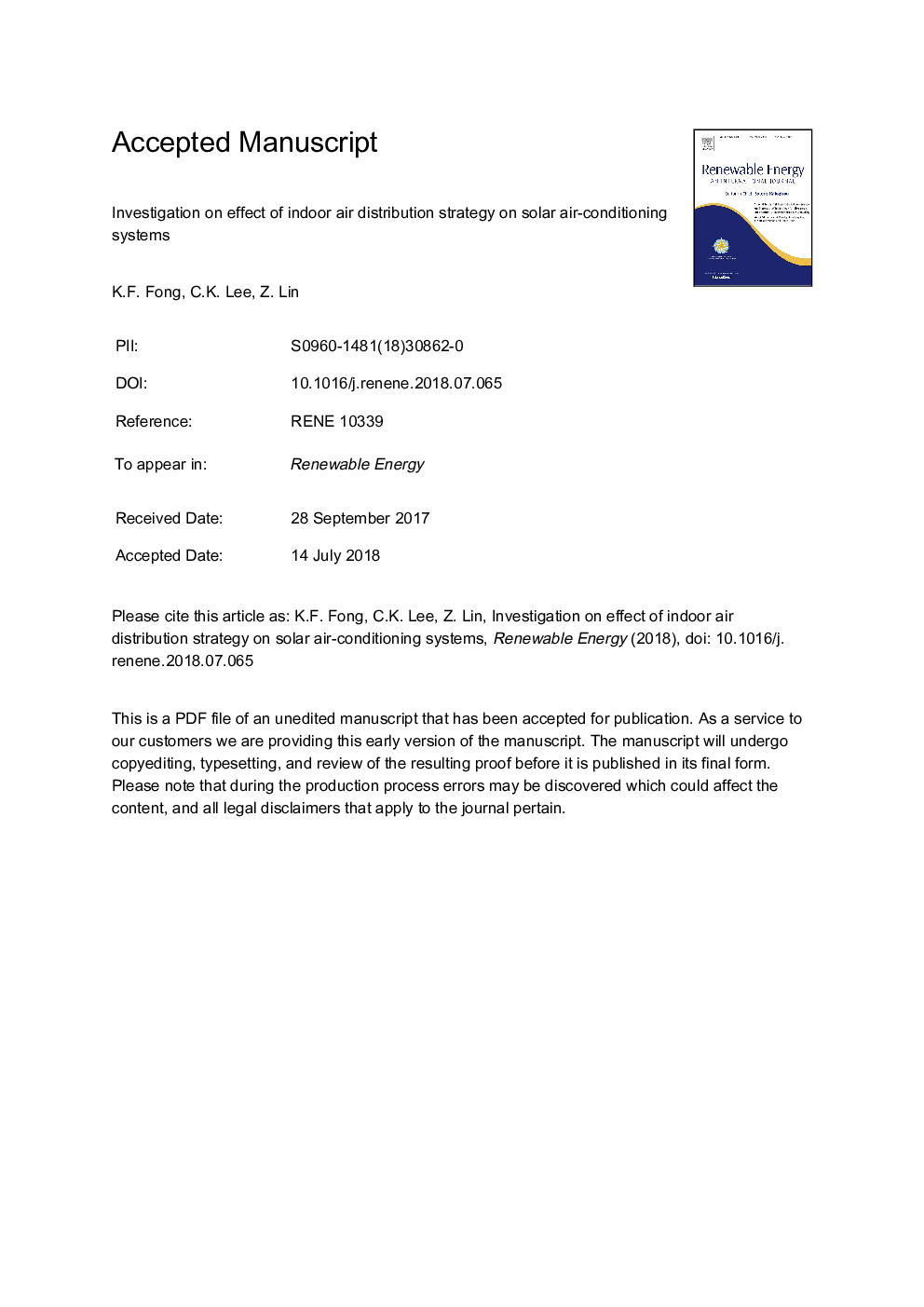| Article ID | Journal | Published Year | Pages | File Type |
|---|---|---|---|---|
| 6763644 | Renewable Energy | 2019 | 26 Pages |
Abstract
Stratum ventilation (SV), a new indoor air distribution strategy, has been promoted for applications in different building premises in recent years. Compared to the conventional mixing ventilation (MV), the prominent advantage of SV is that indoor thermal comfort can be satisfied with a relatively high supply air temperature, hence less energy consumption in refrigeration. In solar air-conditioning, the energy performance can also be facilitated by high-temperature cooling. As such, the potential of SV to be involved in solar air-conditioning was evaluated. In this study, the solar air-conditioning systems included solar absorption cooling system (SAbCS), solar adsorption cooling system (SAdCS), solar desiccant cooling system (SDCS), hybrid solar absorption-desiccant cooling system (HSAbDCS) and hybrid solar adsorption-desiccant cooling system (HSAdDCS). Their performances using SV and MV were determined through year-round dynamic simulation. Compared to the counterpart using MV, SAbCS, SAdCS, SDCS, HSAbDCS and HSAdDCS associated with SV could have 35%, 54%, 59%, 29% and 44% saving in the annual primary energy consumption for building in subtropical climate respectively. Benchmarked with the conventional air-conditioning system, they could have primary energy saving up to 30%. Consequently, solar air-conditioning and SV can have synergetic merit in building application in hot and humid city.
Keywords
Related Topics
Physical Sciences and Engineering
Energy
Renewable Energy, Sustainability and the Environment
Authors
K.F. Fong, C.K. Lee, Z. Lin,
